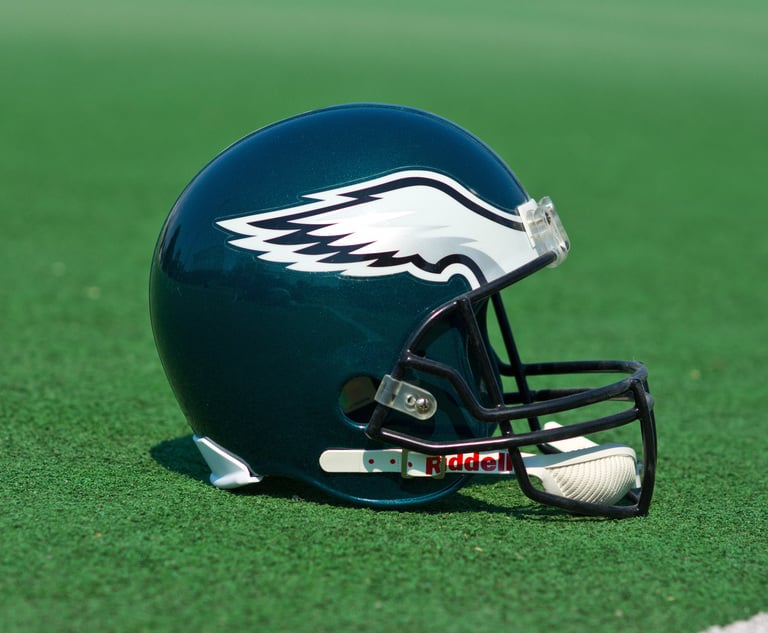Should Vehicle Manufacturers Be Entitled to Apportionment of Liability?
Automobile manufacturers are legally obligated to design, build and sell vehicles that are crashworthy, as in Gaudio v. Ford Motor, 926 A. 2d 524 (Pa. Super. 2009), appeal den., 989 A. 2d 917 (2010). Crashworthiness is the designed protection a vehicle affords occupants against injury or death in a collision, as in Harsh v. Petroll, 840 A.2d 404, 417-418 (Pa. Commwlth 2003). If a motorist or passenger is involved in a collision and she suffers enhanced injuries, the vehicle manufacturer will be liable for those injuries—if the producing harm was caused by a defective design, as in Hutchinson v. Penske Truck Leasing, 876 A. 2d 978 (Pa. Super. 2005), aff'd. 592 Pa. 38 (2007). Before the 2011 amendments to the Pennsylvania Comparative Negligence Act, the tortfeasor causing the accident and the tortfeasor-manufacturer whose product enhanced the injuries were jointly and severally liable. Thus, if a jury found the offending driver 80 percent liable and the vehicle's faulty design 20 percent liable (for the purpose of perfecting a claim for contribution) for the enhanced injury, the victim could recover the full amount of the verdict from either party. However, in 2011, the legislature altered the common law and passed 42 Pa. C. S. 7102 (a.1) and (a.2) to establish several liability based upon jury apportionment of each defendant's liability, 42 Pa. C. S. 7102 (a.3) allows for joint and several status of a defendant found "not less than 60 percent" liable. The question that has not been addressed in connection with the doctrine of crashworthiness is whether apportionment of liability is appropriate when the plaintiff's harm is divisible or indivisible? As set forth below, the most logical answer is: no.
August 10, 2017 at 05:00 PM
8 minute read
Automobile manufacturers are legally obligated to design, build and sell vehicles that are crashworthy, as in Gaudio v. Ford Motor, 926 A. 2d 524 (Pa. Super. 2009), appeal den., 989 A. 2d 917 (2010). Crashworthiness is the designed protection a vehicle affords occupants against injury or death in a collision, as in Harsh v. Petroll, 840 A.2d 404, 417-418 (Pa. Commwlth 2003). If a motorist or passenger is involved in a collision and she suffers enhanced injuries, the vehicle manufacturer will be liable for those injuries—if the producing harm was caused by a defective design, as in Hutchinson v. Penske Truck Leasing, 876 A. 2d 978 (Pa. Super. 2005), aff'd. 592 Pa. 38 (2007). Before the 2011 amendments to the Pennsylvania Comparative Negligence Act, the tortfeasor causing the accident and the tortfeasor-manufacturer whose product enhanced the injuries were jointly and severally liable. Thus, if a jury found the offending driver 80 percent liable and the vehicle's faulty design 20 percent liable (for the purpose of perfecting a claim for contribution) for the enhanced injury, the victim could recover the full amount of the verdict from either party. However, in 2011, the legislature altered the common law and passed 42 Pa. C. S. 7102 (a.1) and (a.2) to establish several liability based upon jury apportionment of each defendant's liability, 42 Pa. C. S. 7102 (a.3) allows for joint and several status of a defendant found “not less than 60 percent” liable. The question that has not been addressed in connection with the doctrine of crashworthiness is whether apportionment of liability is appropriate when the plaintiff's harm is divisible or indivisible? As set forth below, the most logical answer is: no.
The Divisible Injury Issue
The underlying predicate for the duty to build and sell crashworthy vehicles is the responsibility to protect motorists. If the manufacturer can escape liability by apportioning a large percentage of liability to the motorist causing the collision, then that result will virtually eradicate the legal duty imposed upon the manufacturer. Why build a crashworthy vehicle if the manufacturer can simply blame the tortfeasor who caused the collision? Further, if the damages are divisible between the collision-causing tortfeasor and the noncrashworthy manufacturer, why is apportionment warranted? The Comparative Negligence Act requires apportionment when there is a factual predicate showing that more than one tortfeasor was a proximate cause of the total damages suffered. When, however, the damages are divisible because of successive rather than concurrent fault, the need to apportion liability disappears.
The Indivisible Injury Issue
If an enhanced injury is nondivisible (such as death), then how can a jury apportion liability? Pennsylvania courts have cited Mitchell v. Volkswagen AG, 669 F.2d 1199 (8th Cir. 1982), which held: “If the manufacturer's negligence is found to be a substantial factor in causing an indivisible injury such as paraplegia, death, etc., then absent a reasonable basis to determine which wrongdoer actually caused the harm, the defendants should be treated as joint and several tortfeasors.”
The same conclusion was reached by the Florida appellate court in Gross v. Lyons, 763 So. 2d 276 (Fla. 2000)—despite the existence of a statutory requirement to apportion liability: “Application of the indivisible injury rule is not inconsistent with Florida statutory law concerning the apportionment of damages amongst tortfeasors based on fault … Florida Statutes (1999), provides that trial courts 'shall enter judgment against each party liable on the basis of such party's percentage of fault and not on the basis of the doctrine of joint and several liability.'” In Fabre v. Marin, 623 So. 2d 1182 (Fla. 1993), this court observed that the legislature's intention in enacting Section 768.81 was to “replace joint and several liability with a system that requires each party to pay for noneconomic damages only in proportion to the percentage of fault by which that the defendant contributed to the accident.” The indivisible injury rule and the apportionment of damages based on fault are not mutually exclusive. Here, for example, the petitioner was the sole legal cause for the accident; therefore, if that accident was a substantial factor in causing the respondent to suffer an indivisible injury, then petitioner would be liable for the entire damage. Accordingly, we hereby adopt into Florida law the indivisible injury rule to be applied when a jury cannot apportion injury, as quoted from the Arizona Supreme Court: “When the tortious conduct of more than one defendant contributes to one indivisible injury, the entire amount of damage resulting from all contributing causes is the total amount of damages recoverable by the plaintiff.”
Requiring a car company to be fully liable for an enhanced indivisible injury is completely consistent with the Pennsylvania Supreme Court's analysis in Harsh v. Petrol, 887 A.2d at 217. In Harsh, the court agreed that “the normal rules of concurrent causation and joint and several liability operative in product liability cases should also pertain in the crashworthiness context. As the appellees have developed, common law joint and several liability evolved on the theory that, as between an injured, innocent plaintiff and defendants whose breach of some duty is proximately related to the injury, it is preferable to allocate the risk of a default in the payment of due compensation to the defendants. Further, as noted by the trial court, Pennsylvania tort law also maintains that multiple substantial factors may cooperate to produce an injury.
This content has been archived. It is available through our partners, LexisNexis® and Bloomberg Law.
To view this content, please continue to their sites.
Not a Lexis Subscriber?
Subscribe Now
Not a Bloomberg Law Subscriber?
Subscribe Now
NOT FOR REPRINT
© 2025 ALM Global, LLC, All Rights Reserved. Request academic re-use from www.copyright.com. All other uses, submit a request to [email protected]. For more information visit Asset & Logo Licensing.
You Might Like
View All
Pa. Defense Firm Sued by Client Over Ex-Eagles Player's $43.5M Med Mal Win
3 minute read


Court Sanctions Attorney $7.5K for Filing Repeated Erroneous Complaints
5 minute readTrending Stories
- 1Uber Files RICO Suit Against Plaintiff-Side Firms Alleging Fraudulent Injury Claims
- 2The Law Firm Disrupted: Scrutinizing the Elephant More Than the Mouse
- 3Inherent Diminished Value Damages Unavailable to 3rd-Party Claimants, Court Says
- 4Pa. Defense Firm Sued by Client Over Ex-Eagles Player's $43.5M Med Mal Win
- 5Losses Mount at Morris Manning, but Departing Ex-Chair Stays Bullish About His Old Firm's Future
Who Got The Work
J. Brugh Lower of Gibbons has entered an appearance for industrial equipment supplier Devco Corporation in a pending trademark infringement lawsuit. The suit, accusing the defendant of selling knock-off Graco products, was filed Dec. 18 in New Jersey District Court by Rivkin Radler on behalf of Graco Inc. and Graco Minnesota. The case, assigned to U.S. District Judge Zahid N. Quraishi, is 3:24-cv-11294, Graco Inc. et al v. Devco Corporation.
Who Got The Work
Rebecca Maller-Stein and Kent A. Yalowitz of Arnold & Porter Kaye Scholer have entered their appearances for Hanaco Venture Capital and its executives, Lior Prosor and David Frankel, in a pending securities lawsuit. The action, filed on Dec. 24 in New York Southern District Court by Zell, Aron & Co. on behalf of Goldeneye Advisors, accuses the defendants of negligently and fraudulently managing the plaintiff's $1 million investment. The case, assigned to U.S. District Judge Vernon S. Broderick, is 1:24-cv-09918, Goldeneye Advisors, LLC v. Hanaco Venture Capital, Ltd. et al.
Who Got The Work
Attorneys from A&O Shearman has stepped in as defense counsel for Toronto-Dominion Bank and other defendants in a pending securities class action. The suit, filed Dec. 11 in New York Southern District Court by Bleichmar Fonti & Auld, accuses the defendants of concealing the bank's 'pervasive' deficiencies in regards to its compliance with the Bank Secrecy Act and the quality of its anti-money laundering controls. The case, assigned to U.S. District Judge Arun Subramanian, is 1:24-cv-09445, Gonzalez v. The Toronto-Dominion Bank et al.
Who Got The Work
Crown Castle International, a Pennsylvania company providing shared communications infrastructure, has turned to Luke D. Wolf of Gordon Rees Scully Mansukhani to fend off a pending breach-of-contract lawsuit. The court action, filed Nov. 25 in Michigan Eastern District Court by Hooper Hathaway PC on behalf of The Town Residences LLC, accuses Crown Castle of failing to transfer approximately $30,000 in utility payments from T-Mobile in breach of a roof-top lease and assignment agreement. The case, assigned to U.S. District Judge Susan K. Declercq, is 2:24-cv-13131, The Town Residences LLC v. T-Mobile US, Inc. et al.
Who Got The Work
Wilfred P. Coronato and Daniel M. Schwartz of McCarter & English have stepped in as defense counsel to Electrolux Home Products Inc. in a pending product liability lawsuit. The court action, filed Nov. 26 in New York Eastern District Court by Poulos Lopiccolo PC and Nagel Rice LLP on behalf of David Stern, alleges that the defendant's refrigerators’ drawers and shelving repeatedly break and fall apart within months after purchase. The case, assigned to U.S. District Judge Joan M. Azrack, is 2:24-cv-08204, Stern v. Electrolux Home Products, Inc.
Featured Firms
Law Offices of Gary Martin Hays & Associates, P.C.
(470) 294-1674
Law Offices of Mark E. Salomone
(857) 444-6468
Smith & Hassler
(713) 739-1250





